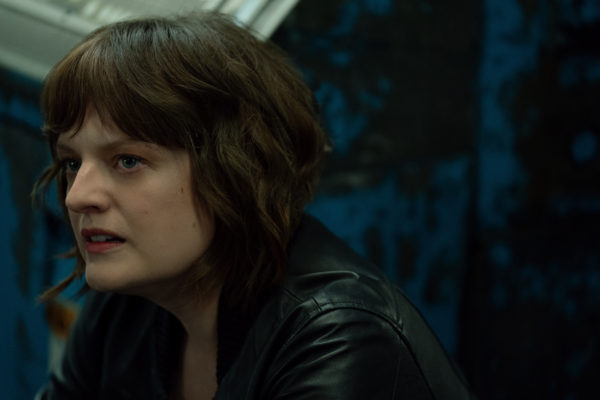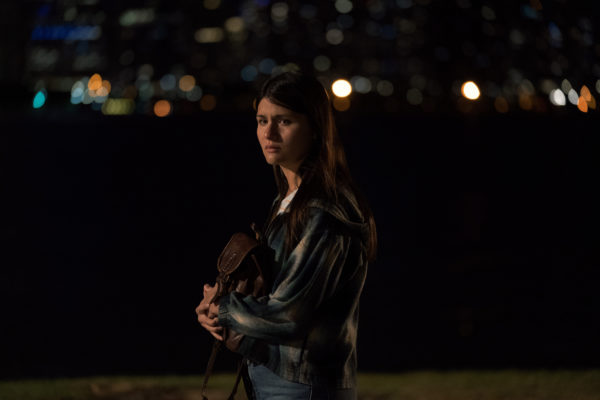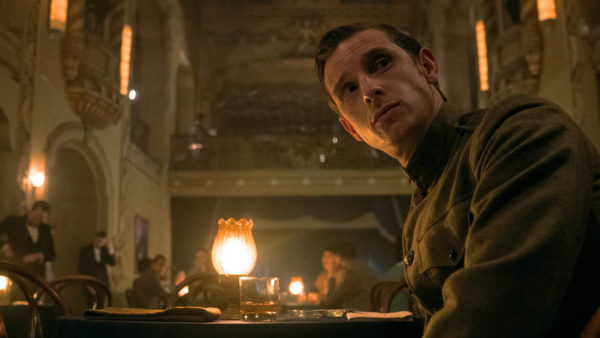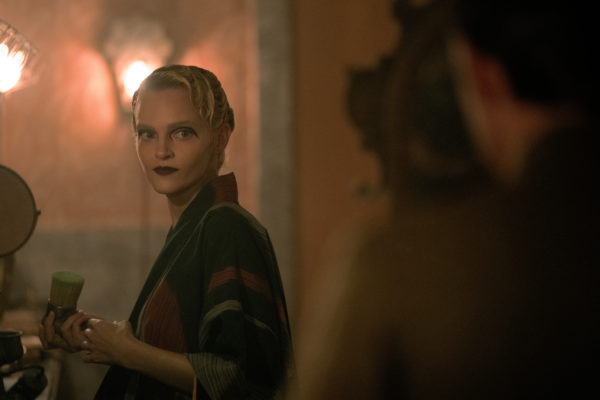
It’s the end of the road for Kirby as AppleTV closes the book on its limited series adaptation of Shining Girls.
Spoilers for episode 8…
Missed a Review? Episodes 1-3 I 4 I 5 I 6 I 7
Episode 8 “30”: As Kirby’s reality spirals, she sets her sights on finally tracking down Harper.
For most of the front half of Shining Girls‘ run, Kirby (Elisabeth Moss) was a traumatized survivor. She was never weak, but she lacked agency – to speak up for herself or her experience (to be clear: this was clearly out of self-preservation).
It was her relationship with Dan (Wagner Moura) that finally broke her out of that cycle. It took a few episodes, but over time the pair grew to respect and trust each and what initially presented as defensiveness and a bristling, hard exterior were revealed to be Kirby’s coping mechanisms. This is what she had to do to survive, but with an ally like Dan, she began to open up and seize control of her life.
The Kirby we see in the aftermath of Dan’s death in “Offset” is distraught from her loss, but she’s also determined, focused and single-minded. She counsels Jinny (Phillipa Soo) on the rules to survive in a new timeline and even involves her in research at the Sun-Times. But when Harper’s killing spree keeps changing the timeline, Kirby abandons her fellow “particle” to finish the job once and for all. It’s all there in her line “I don’t wanna feel this way anymore. So I don’t care what happens next.” That’s some Final Girl shit right there.
It’s also what Shining Girls has been building to. “30” has a few perfunctory scenes, notably Harper’s visit and murder of Christopher Denham‘s Leo over the VHS tape (none of which ultimately matters), but for the most part, writer Daina Reid keeps the focus on Kirby and Harper and the lead up to their final battle.
Once Kirby has the address of the house, she quickly ascertains that it is an important part of Harper’s M.O. (likely thanks to Leo’s reference back in “Screamer“). Her brief exploration, which includes discovering her bartending earrings from “Bright,” as well the Pegasus figurine Harper gave her as a child in the first episode, ultimately ends in an intentionally vague moment when she opens the blinds and sees…something.

The lack of answers doesn’t hinder our ability to understand the narrative of the finale (and, by extension, the whole limited series), but it is the latest in a series of instances where the show could do more to explain its logistics, which would shed light on character motivations and enhance the viewing experience for audiences.
For example: while we understand how Harper controls his time travel, it’s never clear why Leo can’t do the same. Previous episodes inferred that murders in the past could be altered, but there’s no indication how this would affect the timeline. It’s also never been clear how or why Harper selects his victims. In this episode, does the killer gain anything from his killing spree, which includes a the maid and a woman on a picnic, or is he just working off his aggression and misogyny? And, then there’s the mystery of what Kirby sees outside of the window or why it grants her the ability to take ownership of the house.
Again, none of these questions are pressing or compromise the integrity of the series, but at times it has felt like Shining Girls isn’t entirely certain of its own rules or logistics. Or perhaps it’s that the focus of the show could be refined so that scenes like the cold open, set in 1848 Lake View, Chicago and involving a Swedish explorer who discovers the contemporary house, is more satisfy. Sure, this sequence is confirmation that the house (and its time travelling denizens) have been in play for well over a century, but aside from that, it is little more than a curiousity that fails to contribute anything meaningful to the narrative or characters.
Audiences hungry for resolution will undoubtedly find more satisfaction in the long-overdue skirmish between protagonist and antagonist. Despite its brevity, there’s something immensely satisfying seeing Kirby lying in wait for Harper and seeing him get his comeuppance (love that she dispatches him with a second knife she’s hidden in her boot!) Is it a little too quick? Yes, but it’s also not the end of their battle.
What follows is similar to what we saw with Jinny’s timeline last episode. Shining Girls has wrung a surprising amount of mileage out of repeating scenes that its audience is familiar with, albeit from a slightly different perspective or context. So Madeline Brewer‘s Klara is now abrasive when Harper appears at her show; there’s a polaroid of him waiting at the Old Woman’s house where he steals the watch, and Kirby shoots him in the shoulder immediately upon entering the house. With Kirby now in control, she also reconfigures Harper’s entire timeline, usurping his role as watcher to ensure that he doesn’t act on his violent proclivities, but – in a controversial decision – opting to let him live.

The result: Shining Girls presents Kirby as capable of following in Harper’s footsteps, but she is portrayed as more benevolent and, therefore, unwilling to end his life. Sure, she effectively defangs him with the ability to interject in anything he does and, in so doing, sets right the lives of the titular 30 women he killed throughout history, but there’s something undeniably unsatisfying when the series takes away her violent revenge.
This ending, while intriguing, also feels a little too simple, pat and overly cheerful. This is especially true of the brief, dialogue-free montage of Julia Madrigal, Jinny and other unnamed victims living their lives in an aesthetic that is reminiscent of antidepressants or feminine hygiene product commercials.
Alas, this ending doesn’t entirely jive with the preceding seven episodes. The sole somber (unhappy?) exception to this “everything’s going to be alright” ending is our own hero’s own fate. What becomes of Kirby, now that she is tied to the haunted house? Shining Girls is content to end of this single note of uncertainty. If it was only natural that Kirby ultimately end up alone and the future undetermined, at least Shining Girls could have allowed her to keep her “Good For Her” moment when she killed her attacker.
Our embattled heroine deserved that, at least.

Other Observations:
- Narrative criticisms aside, “30” contains at minimum two incredibly powerful moments. One is the heartfelt reunion in the bar as Kirby engages Dan to see if he remembers her (using the technique that Harper employed in “Bright”). The chemistry between Moura and Moss has been one of the best aspects of the series and their interaction here, however brief, is packed with emotional resonance.
- The other emotional sequence, surprisingly, is Kirby’s interaction with Dr. Iris, the coroner (Hanna Dworkin). This scene obviously anticipates her scene with Dan at the end of the episode, but the way that Kirby speaks about him when she believes he’s gone forever is a testament to their friendship and how much she loves/respects him. Considering we only met Iris once (back in the first episode) there’s no reason why this scene should work as well as it does. Credit Dworkin for imbuing this with the requisite gravity to sell Dan’s loss, and Moss for the tender touch of his head on the slab.
- Despite a longer runtime than most episodes, “30” only offers perfunctory wrap-ups for most of the supporting characters. We learn that Marcus (Chris Chaulk) is happily married to a woman named Vicki, Klara presumably continues her show after she tells Harper what she really thinks of him (thanks to some obvious coaching from Kirby) and Jinny is reinstated to her old post at the Planetarium.
- Finally, there’s no sign of Rachel (Amy Brenneman) in the finale. Kirby does attempt to call her mother after Dan is killed, but she fails to reach her and Brenneman never actually appears on screen. It’s odd and suggests that the character was ultimately unimportant.
Shining Girls is now available in its entirety on AppleTV